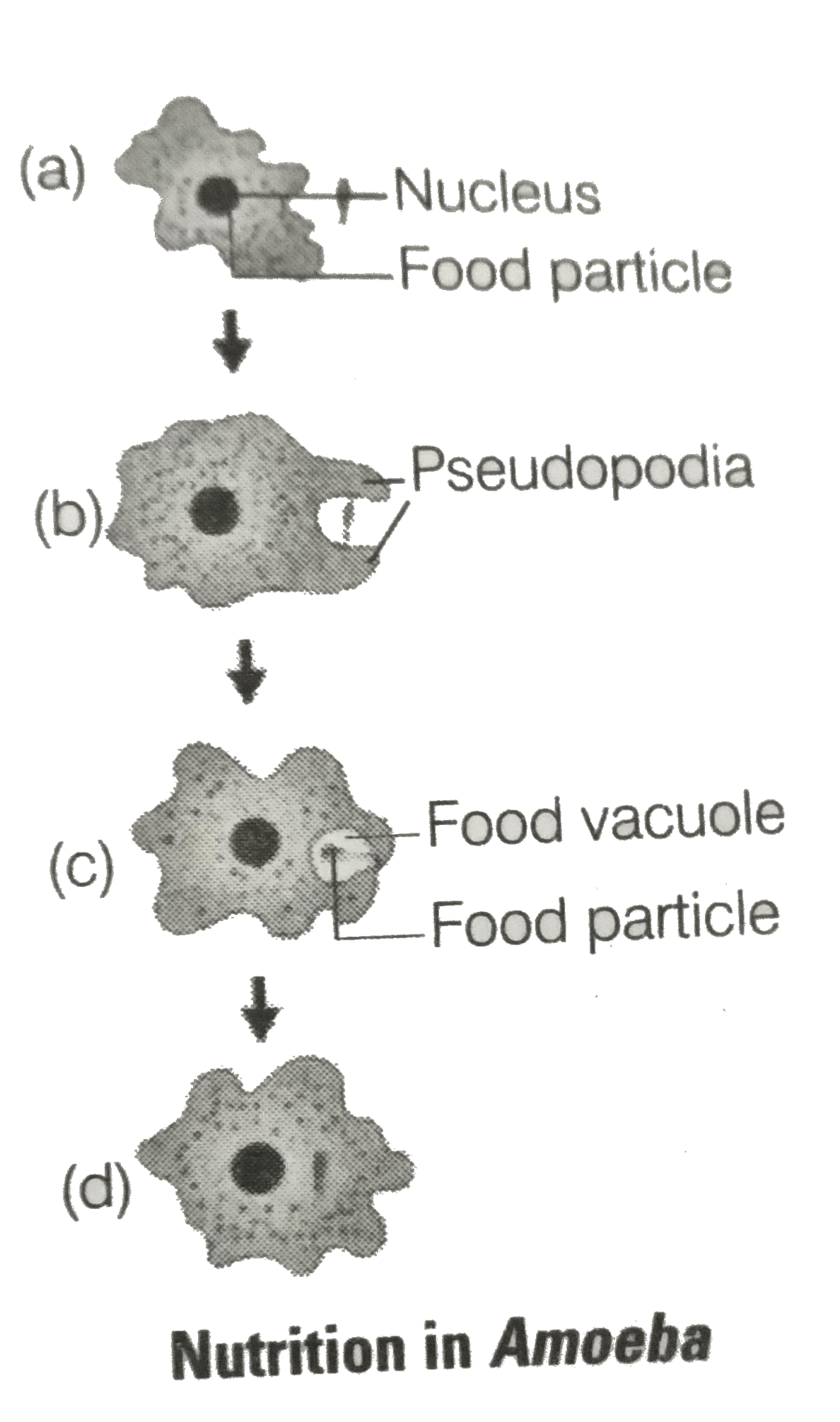Explain the kind of nutrition found in Fungi.
Step-by-Step Solution
1. Introduction to Fungi Nutrition:
- Fungi belong to the kingdom Fungi and are primarily eukaryotic organisms. They can be unicellular (like yeast) or multicellular (like molds and mushrooms).
2. Heterotrophic Nature:
- Fungi are heterotrophic organisms, meaning they cannot produce their own food through photosynthesis. Instead, they obtain their nutrition by absorbing organic compounds from their environment.
3. Modes of Nutrition in Fungi:
- Fungi exhibit different modes of nutrition, which can be categorized into three main types: saprophytic, parasitic, and symbiotic.
4. Saprophytic Nutrition:
- In saprophytic nutrition, fungi feed on dead and decaying organic matter. They play a crucial role in decomposition. An example of a saprophytic fungus is Rhizopus.
5. Parasitic Nutrition:
- Parasitic fungi obtain their nutrition by living on or within other living organisms, known as hosts. They absorb nutrients from the host, which can be either plants or animals. An example of a parasitic fungus is Puccinia.
6. Symbiotic Nutrition:
- In symbiotic nutrition, fungi form a mutualistic relationship with other organisms, such as plants or algae. Both partners benefit from this relationship. For instance, in lichens, fungi provide shelter to algae, while algae produce carbohydrates through photosynthesis that serve as food for the fungi. Another example is mycorrhiza, where fungi associate with plant roots, enhancing nutrient absorption for the plant while receiving carbohydrates in return.
7. Conclusion:
- In summary, fungi exhibit three primary modes of nutrition: saprophytic, parasitic, and symbiotic. They are essential for nutrient cycling in ecosystems and have various interactions with other organisms.
- Fungi belong to the kingdom Fungi and are primarily eukaryotic organisms. They can be unicellular (like yeast) or multicellular (like molds and mushrooms).
- Fungi are heterotrophic organisms, meaning they cannot produce their own food through photosynthesis. Instead, they obtain their nutrition by absorbing organic compounds from their environment.
- Fungi exhibit different modes of nutrition, which can be categorized into three main types: saprophytic, parasitic, and symbiotic.
- In saprophytic nutrition, fungi feed on dead and decaying organic matter. They play a crucial role in decomposition. An example of a saprophytic fungus is Rhizopus.
- Parasitic fungi obtain their nutrition by living on or within other living organisms, known as hosts. They absorb nutrients from the host, which can be either plants or animals. An example of a parasitic fungus is Puccinia.
- In symbiotic nutrition, fungi form a mutualistic relationship with other organisms, such as plants or algae. Both partners benefit from this relationship. For instance, in lichens, fungi provide shelter to algae, while algae produce carbohydrates through photosynthesis that serve as food for the fungi. Another example is mycorrhiza, where fungi associate with plant roots, enhancing nutrient absorption for the plant while receiving carbohydrates in return.
- In summary, fungi exhibit three primary modes of nutrition: saprophytic, parasitic, and symbiotic. They are essential for nutrient cycling in ecosystems and have various interactions with other organisms.
Topper's Solved these Questions
- BIOLOGICAL CLASSIFICATION FIVE-KINGDOM CLASSIFICATIONBOOK - ICSECHAPTER - BIOLOGICAL CLASSIFICATION FIVE-KINGDOM CLASSIFICATIONEXERCISE - REVIEW QUESTIONS (Short answer type questions)
16 Videos
- BIOLOGICAL CLASSIFICATIONBOOK - ICSECHAPTER - BIOLOGICAL CLASSIFICATIONEXERCISE - Ncert Exercises (Differentiate Between )
24 Videos
- BIOLOGY ISC SAMPLE QUESTION PAPER 2019BOOK - ICSECHAPTER - BIOLOGY ISC SAMPLE QUESTION PAPER 2019EXERCISE - PART-II (SECTION -C)
6 Videos
Similar Questions
What is the main kind of nutrition found in fungi?
View SolutionName the process and explain the type of nutrition found in green plants. List the raw materials required for this process. Given chemical equation of the mentioned process.
(b) Write three events that occurs during this process.
View Solution
Knowledge Check
The holozoic kind of nutrition is found in
AprotozoansBphytoplanktonsCcyanobacteriaDfungi
Explain the kind of nutrition associations found in fungi.
View SolutionName the modes of nutrition in fungi.
View SolutionExplain the mode of nutrition in Kingdom Protista.
View SolutionExplain the nutrition process in Amoeba.
View SolutionExplain the process of nutrition in Amoeba.

View SolutionHolophytic nutrition is found in
View SolutionGive biological explanations for the following:
The mode of nutrition in fungi is mostly heterotrophic.
View Solution
